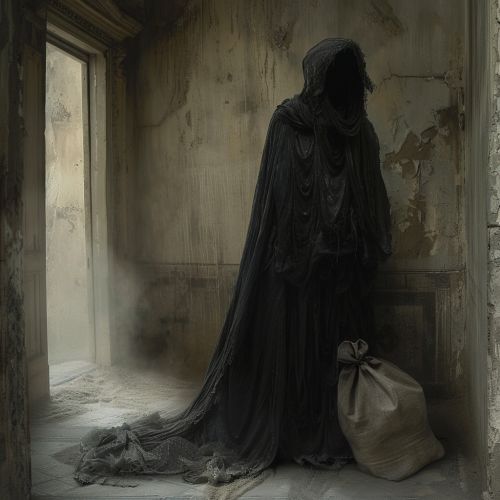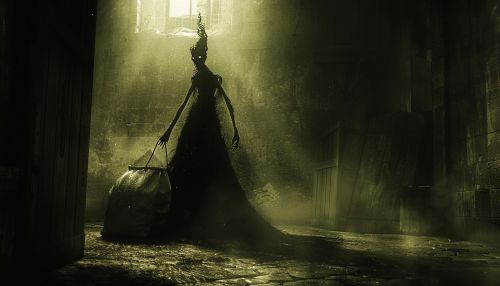The Sandman
Introduction
"The Sandman" is a term that has been used in various contexts, including mythology, literature, and popular culture. This article delves into the multifaceted nature of "The Sandman," exploring its origins, evolution, and significance across different domains.
Mythological Origins
The concept of the Sandman originates from European folklore, particularly in Germanic and Scandinavian traditions. In these myths, the Sandman is a supernatural being who brings sleep and dreams by sprinkling magical sand or dust into the eyes of children. The earliest references to the Sandman can be traced back to the 18th century, where he was depicted as a benevolent figure who ensured restful sleep.
Literary Depictions
The Sandman has been a prominent figure in literature, with various authors offering their interpretations. One of the most notable literary works is E.T.A. Hoffmann's "Der Sandmann" (1816), a dark tale that explores themes of fear and psychological distress. In Hoffmann's story, the Sandman is a sinister figure who steals the eyes of children, a stark contrast to the benevolent character in folklore.
E.T.A. Hoffmann's "Der Sandmann"
E.T.A. Hoffmann's portrayal of the Sandman is a significant departure from traditional folklore. In "Der Sandmann," the protagonist Nathanael is haunted by the figure of the Sandman, who he believes is responsible for his father's death. The story delves into themes of paranoia, trauma, and the blurred line between reality and imagination. Hoffmann's Sandman is a precursor to the modern psychological horror genre, influencing later works in literature and film.


Popular Culture
The Sandman has also made a significant impact on popular culture, appearing in various forms of media, including comics, television, and film. One of the most influential adaptations is Neil Gaiman's comic book series "The Sandman," published by DC Comics' Vertigo imprint.
Neil Gaiman's "The Sandman"
Neil Gaiman's "The Sandman" is a seminal work in the comic book industry, blending elements of mythology, horror, and fantasy. The series follows the character Dream, also known as Morpheus, who is one of the Endless, a group of powerful beings that embody universal concepts. Gaiman's Sandman is a complex figure, responsible for the realm of dreams and the subconscious. The series explores themes of destiny, identity, and the nature of storytelling, earning critical acclaim and a dedicated fanbase.
Psychological Interpretations
The Sandman has also been the subject of psychological analysis, particularly in the context of dreams and the subconscious. Sigmund Freud, the father of psychoanalysis, referenced Hoffmann's "Der Sandmann" in his essay "The Uncanny" (1919). Freud used the story to illustrate the concept of the uncanny, a feeling of eerie familiarity that arises when something familiar is rendered strange.
The Uncanny
Freud's analysis of "Der Sandmann" focuses on the themes of repression and the return of the repressed. He argues that the figure of the Sandman represents repressed fears and anxieties that resurface in the form of nightmares. This interpretation has influenced subsequent psychological theories on the nature of dreams and the role of the subconscious in shaping human experience.
Scientific Perspectives
From a scientific standpoint, the Sandman can be seen as a metaphor for the biological processes that regulate sleep and dreams. The study of sleep, known as somnology, has uncovered various mechanisms that govern the sleep-wake cycle, including the role of neurotransmitters and circadian rhythms.
Sleep and Dream Mechanisms
Research in somnology has identified several key neurotransmitters involved in sleep regulation, such as melatonin and serotonin. These chemicals help to induce and maintain sleep, much like the mythical Sandman's magical sand. Additionally, the study of circadian rhythms has revealed the importance of the body's internal clock in regulating sleep patterns. Understanding these mechanisms provides insight into the biological basis of sleep and dreams, offering a scientific counterpart to the mythological and literary depictions of the Sandman.
Cultural Significance
The Sandman remains a culturally significant figure, symbolizing the universal human experience of sleep and dreams. Across different cultures and historical periods, the Sandman has been reinterpreted to reflect contemporary concerns and beliefs. Whether as a benevolent guardian of sleep or a sinister harbinger of nightmares, the Sandman continues to captivate the human imagination.
